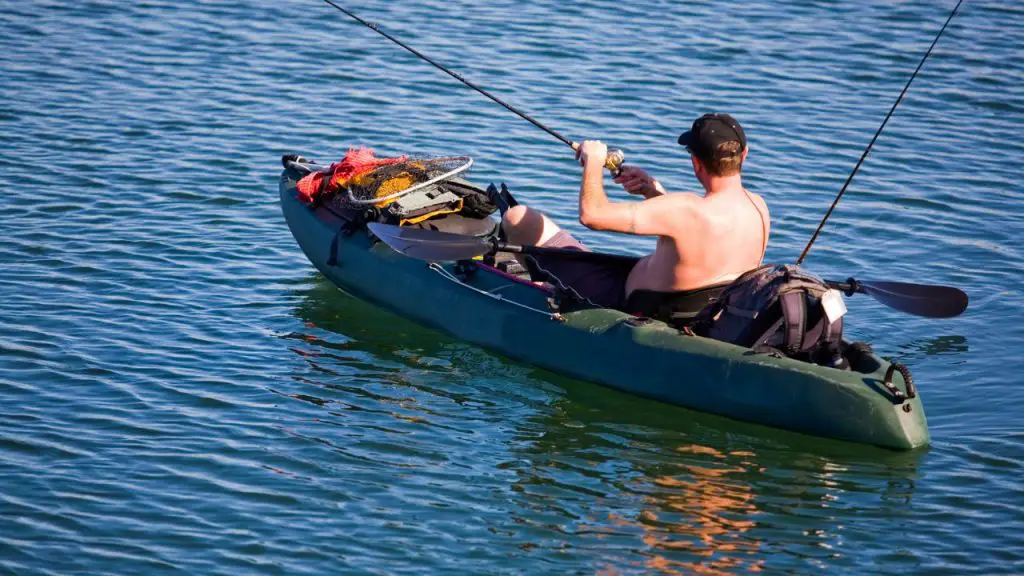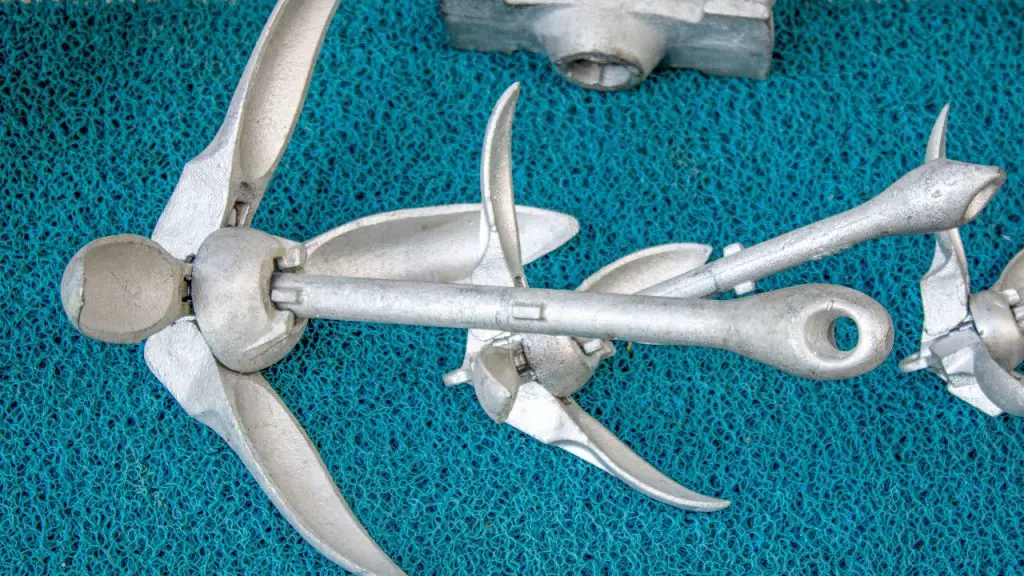Do you need an anchor for kayak fishing? If it is your first time heading into the waters to catch some fish, you might be asking yourself this question. But for veteran kayakers, the answer is straightforward.
Your kayak should be steady when fishing. Casting your net or holding your line when the kayak is drifting away is inconvenient. To enjoy your fishing adventure, you want your kayak to be stationary, regardless of the water current and wind direction.
Yes, you need an anchor or alternative to hold your kayak. Read on for the detailed answer, including how to choose an anchor, anchor types, and the best options if you can’t get an anchor.
Table of Contents
Do You Really Need Anchors for Kayak Fishing?
This question has no direct answer. Whether you need an anchor or not depends on the fishing location. You don’t necessarily need an anchor system when fishing in shallow waters, but it may become vital when advancing deeper.
Fortunately, an anchor system is not the only option for holding your boat in deeper waters when kayak fishing. Other alternatives, such as drift socks or drift chutes, can suit the purpose.
But if you want to kayak fish in shallow waters, you can do it with stakeout poles or brush grippers. You can eliminate an anchor in such a case.

Benefits of an Anchor
Using an anchor system or alternatives to hold your kayak when fishing has many benefits. The most apparent one is to prevent your kayak from drifting away when strong winds and water currents come your way.
If you don’t have an anchor in such situations, you will be forced to keep paddling for the kayak to stay in one place. The result will be exhaustion and distraction from fishing. Your hands will be occupied, leaving you incapable of pulling your catch.
An anchor keeps your kayak at the favorite fishing spot and frees your hand. You can then fish peacefully without thinking of your boat drifting away. As a result, you can pinpoint fish hiding in the weed beds while holding the fishing rod with both hands.
You can also fish for a long time since the anchor holds your kayak. You don’t need to keep paddling. So, it is possible to preserve that energy. Besides, you can quietly move into a clove or bay without paddling. All your arms and mind will be free to concentrate on fishing.
How Do You Choose a Kayak Anchor?
Kayak anchor systems come in various types, shapes, and sizes. What you choose depends on many factors, including your intended fishing location.
But most importantly, the features of the anchor. Use the following tips to make an informed decision when buying a new anchor for kayak fishing:

Size of the Anchor
The anchor’s size and weight often go hand in hand, but its size matters the most. The larger the grapnel flukes are, the more efficient the anchor will be in holding the kayak in one place. That is because a large surface area makes it easier to grip rocks or other objects at the bottom of the water body.
But also consider weight. Most fishing kayak anchors weigh 1.5, 3.0, or 3.5 lbs. The anchor weight should correspond to the intended fishing location and water conditions.
Lighter anchors are ideal for use in calm waters and on a lightweight kayak because of the minimal water current and less wind force on the kayak. But if you have a heavy fishing kayak and intend to go fishing in a windy area with choppy water, go for a heavy anchor.
You determine the kayak’s weight by adding your weight and that of the fishing gear and equipment to the rated weight of the boat.
Anchor Line or Chain Length
How long the anchor line or chain is will determine its scope. That’s to say, the anchor you choose should have a long rope if you want to fish in deeper waters. On the other hand, the chain length is a non-issue if fishing in shallow waters. The aim is to get the anchor to the riverbed or water bottom.
The recommended anchor line length is 7 feet for every foot of water depth. That means you will need a 70-foot anchor chain for 10-foot-deep water.
Storage Capacity
Most fishing kayaks have compartments for storing fishing gear and equipment. How spacious it is on your kayak will determine the size of an anchor system to buy.
Also, most anchors have convenient storage bags to protect your fishing kayak from scratching. That bag should conveniently fit inside the storage compartment.
Additional Considerations
You may consider anchor trolleys. It is not essential but useful if you want to adjust your kayaking position according to the direction of the winds or water waves. The trolley makes it easy to move the anchor from the bow to the stern and vice versa.
You also should anchor your kayak from the stern or bow and let it be parallel to the direction of wind or water current. It makes your kayak streamline, thereby experiencing less drag. Anchoring a kayak from the side increases the drag forces and should never be attempted.
Types of Anchors
Anchors come in different types, including folding grapnel, mushroom, sand, Bruce Claw, Downrigger Weight, and drag chain anchors. Each of these is suited to various water conditions, as explained below.
Folding Grapnel Anchor
A folding grapnel anchor is suitable for any water conditions. You can use it in shallow, deep, calm, or rough water provided the bottom has rocks, sand, or weeds the flukes can hook on.
This anchor type has folding flukes. These blade-like hooks open up to grasp any object at the bottom of the water to hold your kayak. You, however, need a reliable anchor rope or chain paired with these flukes.
A folding grapnel anchor is an all-rounder piece of equipment with enough holding power. It is the best choice if you want a portable and convenient to store anchor.
Mushroom Anchor
Mushroom anchors are only reliable on calm and shallow waters with sand or mud at the bottom. It has a simple design, and its operation is also straightforward.
This anchor is named after its mushroom-shaped head that sits on the bottom of the water. It can effectively grasp any soft material to hold your kayak in one spot.
As mentioned, a mushroom anchor works best in waters with a soft bottom. So, choose it for kayak fishing in such calm and shallow water.
Sand Anchor
Sand anchor is another ideal choice for shallow water with sand or soft mud. As the name implies, this anchor has a metal stake that corkscrews into the soft bed or sand to form a reliable peg where you can tie your kayak to prevent drifting.
The sand anchor is ideal if you want an easy-to-use anchor and your fishing location is shallow water with a muddy or sandy bottom.
Bruce Claw
A Bruce Claw anchor can be used in water of any depth, provided it has a soft or muddy bottom. Like the folding grapnel anchor, this type also has three fluke blades. These shovel-shaped claws open to grasp soft beds or mud at the water’s bottom.
Consider Bruce Claws for kayak fishing in lakes or streams with a soft bottom. Don’t choose it for sandy or rocky bottom water bodies because it will be ineffective.
Downrigger Weight
Downrigger Weight is another choice for anchoring your kayak in the water of any depth, but winds shouldn’t be strong. These big heavy balls sit flat at the water’s bottom. To effectively use it, the water bottom should be soft.
In other words, a Downrigger Weight anchor is the best choice for calm waters with a soft bed. But you may require a larger space to accommodate it.
Drag Chain
A drag chain anchor is the most versatile option. You can use it on any water and any surface. It drags across the bottom of the water to slow down the movement of your kayak. But we feel that the Drag Chain anchor will not keep you in one spot. You will experience a drift, though a minimal one.
Kayak Anchor Alternatives
Do you remember when we say you don’t necessarily need an anchor for kayak fishing? Yes, some alternatives work just as good, and they include the following:
Drift Socks (Chute)
A drift chute is also known as a drift anchor. Drift socks are funnel-shaped bags tied with strings to your kayak. They are easy to use; throw them in the water behind you. As your kayak moves, water gets into the socks to increase drag, slowing you down.
You can use drift socks when kayak-fishing along the shoreline or deep in the ocean or sea waters. The technique relieves you from paddling when you need to change your position and makes you fish for longer hours. However, they will not stop the boat from drifting. Instead, they slow the movement if a strong breeze or water current tries to drag you and your kayak away.
Stake-Out Pole
This anchor alternative is a long stiff pole you push through the scupper hole for a sit-on-top kayak or a kayak mount for other types. It sticks to the bottom of the water. You, therefore, only need to use it in shallow, calm, and slow-moving water with sandy or muddy bottoms.
Stake-Out Pole anchors are viable options, especially if you are on a tight budget.
Brush Gripper
This is one of the easiest-to-use anchor alternatives. It is a pair of pliers used to grab weeds and any water plant nearby to anchor your kayak.
A brush gripper is the best option when fishing in shallow water with a brush. So, you need to stay close to the shoreline and only fish in water with weeds and other water plants to help you hold your kayak.
FAQs
How heavy of an anchor do I need for a kayak?
The anchor weight varies from 1 lb to 5 lbs. Some come in standard weights of 1.5, 3.0, or 3.5 lbs, but you can find others in between. The one you need depends on the intended application and the kayak’s weight. Lighter anchors are ideal for calm waters and lightweight kayaks.
When should I anchor my kayak?
You anchor the kayak if you don’t want it to drift away with winds or water waves. It can be when you are fishing or want to stay at the shore.
Where should I store my kayak anchor?
Most kayaks have gear and equipment storage compartments. That is where you should keep your anchor when not being used. Fold the chain and flukes for convenient storage.
How to anchor a kayak without a trolley
If you don’t have a trolley system, you can use a river angler to run the rope directly through the stern or bow of the kayak. The rigging makes it quick and convenient to deploy or pull out the anchor. It is also safe.
Final Sentences
Do you need an anchor for kayak fishing? Yes or no. An anchor system is essential to keep your boat from drifting when fishing in deep waters. But if you are in shallow waters, you can use any anchor alternative mentioned in this post. They are equally effective in keeping your boat in one fishing spot and freeing your hands to hold the fishing rod.
Thank you for reading this article at Windpaddle to the end. We believe you now have answers to the questions you had. Kindly share the post with fellow paddlers who like kayak fishing to inform them and help us reach many people.








